Overview of Edo Kimekomi Dolls
We will introduce an overview of Edo Kimekomi dolls (history, the purpose of Edo Kimekomi dolls, raw materials, etc.) and the production process (whole dolls and kneaded heads made from paulownia wood).
We will introduce an overview of Edo Kimekomi dolls (history, the purpose of Edo Kimekomi dolls, raw materials, etc.) and the production process (whole dolls and kneaded heads made from paulownia wood).
Paulownia wood is used for the Touso(A mixture of paulownia sawdust and raw wheat gluten paste), white cloud clay for the unglazed head, silk and cotton fabrics for the dressing, and silk thread for the hair.
<Making the base>
Mixing and kneading the paulownia wood powder with raw wheat gluten paste, the base for the head, body, arms and legs is made and dried in a drying room. Some heads are unglazed.
For paulownia wood heads, the base coat is applied, then the undercoat is applied, and the cut-out is followed by five or more coats of top coat.
To put on the garment, glue is applied to the grooves, and then the seams are made using an awl or the wood is inlaid with overlapping stitches. In this case, cold plum powder is used as the glue.
Use a face brush to draw eyes, eyebrows, and lipstick.
After applying the appropriate amount of thin silk thread, the hair is blown. In this case, the hairstyle is tied up, parted, and bald.
◇The above is from the "Dictionary of Traditional Crafts Techniques" published by Graphic-sha Publishing.◇
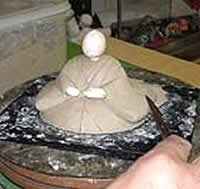
The prototype of the doll is made from clay. The prototype is placed in a wooden frame and sulfur or other liquid is poured in to take the shape of the doll.
This mold is called a "kama," and two kama are made to make the front and back halves of the prototype.

The body is made by mixing paulownia powder with shofu paste and stuffing it into the kiln. Once the front and back kilns are stuffed with paulownia paste, the front and back are joined together to make one piece.
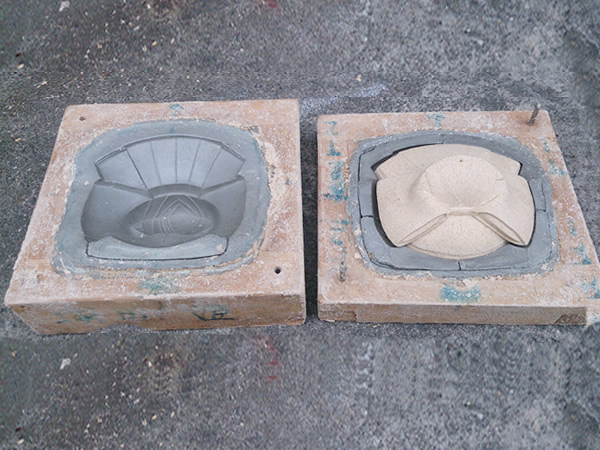
Gently tap the pressed mold from above to release the upper half of the knob. Before removing the body from the lower mold, carefully remove any excess with a bamboo spatula. Then, turn the lower mold sideways to remove the body.

After it has thoroughly dried, any irregularities or cracks that appear on the body are filled in with Touso using a bamboo spatula, or neatly repaired with a file, resulting in a perfect body.
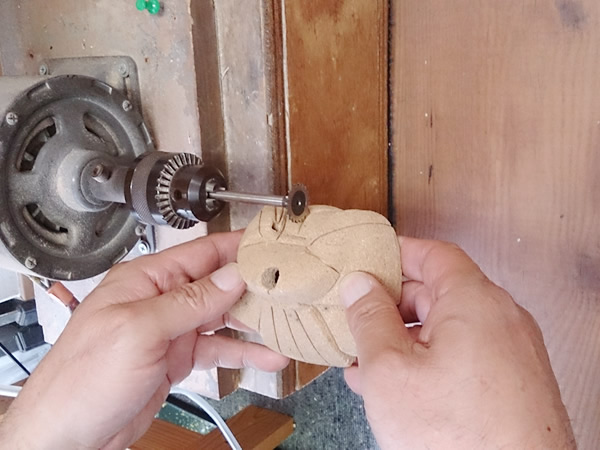
Once the whitewash has dried, grooves are made (sujibori) for the cloth to be inserted into the wood. This groove carving will affect the quality of the finished doll, so it is carefully carved with a carving knife to a consistent width and depth.
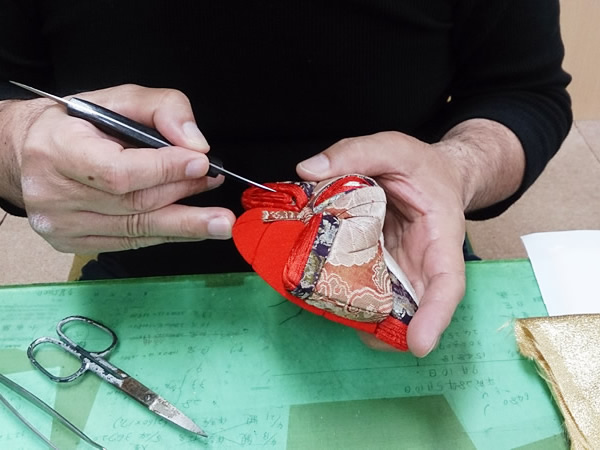
Put glue into the grooves and then use an awl or wood grain spatula to firmly press the fabric, cut to fit the pattern, into the wood.
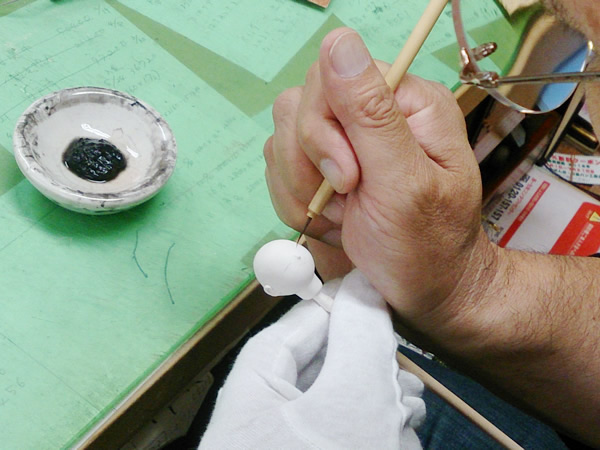
Menso refers to the shape of a doll's face, and drawing this shape is called menso-gaki. It is an important task that determines the quality of the doll.
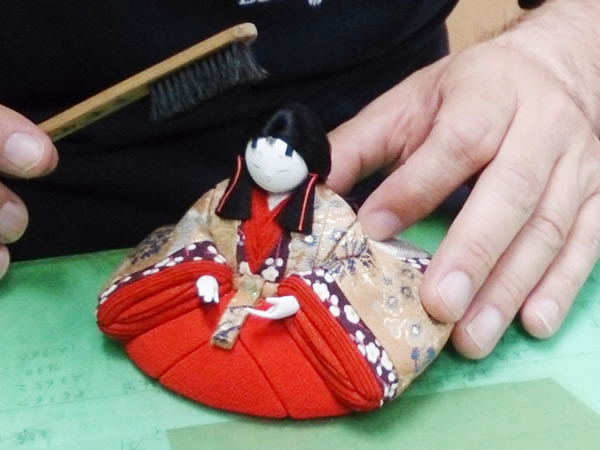
Finally, the hair is brushed and the doll is inspected carefully to check for any flaws in the wood grain inlay, and then the finishing touches are made.
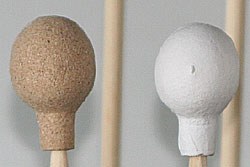
Applying chalk powder to the paulownia wood
A chalk base is applied to the nose, ears, etc. to create bumps and roundness. This process creates facial expressions that are unique to each individual doll, which is not possible with bisque or plaster.
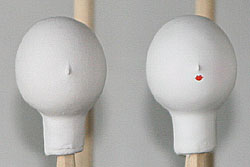
The whitewash is applied in a thinner layer than when the base coat was applied. After this, the shape is adjusted by wiping with water or using sandpaper.
Apply three to five coats of topcoat gofun (finer than the base coat).
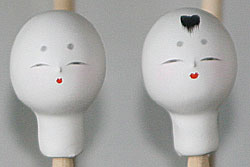
Draw eyes and eyebrows with light ink and lips with rouge.
Use ink to mark the hairline where the hair will be planted.
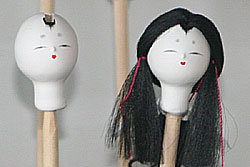
A groove is dug with a knife or other tool to put the hair in. The hair is then placed in the groove, glued in place, and the hair is then styled to finish.
Biscuit or plaster heads do not require steps ① to ③, making them less time-consuming and are the current mainstream method.
卸、小売り等 御気軽にお問い合わせ下さい。
| 営業時間 | 10時~17時 |
|---|---|
| 定休日 | 日曜・祝日 *事前にご連絡いただければ上記の日時外でも対応いたします。 |
| 住 所 | 〒131-0033 東京都墨田区向島2丁目11-7 |
| TEL | 03-3622-4579 |
| FAX | 03-3622-4590 |
| eisyun@edokimekomi.com | |
| アクセス | ・都営浅草線、営団半蔵門線押上駅A3口(向島方面)より徒歩8分 ・東武伊勢崎線とうきょうスカイツリー駅より徒歩10分 |